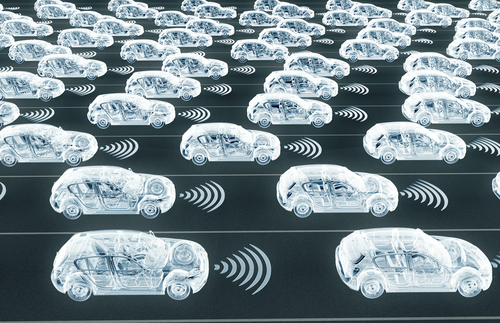
The age of autonomy is upon us and a world where roads are filled with autonomous cars will become reality sooner than you think. This means the need for car manufacturers to embrace and understand location data is increasingly important.
One of the key steps required to achieve an autonomous future is mastering the map. The New York Times recently explained how highly accurate and efficient location information is key to unlocking the potential of the autonomous car. A future where maps will no longer just get you from A to B, but become the driver of next-generation automation.
Self-healing maps

The connected cars of the future will rely on this data-driven mapping system and we’ll begin to see cars with in-built mapping systems that ‘self-heal’. A map that self-heals is constantly looking to update and incorporate the very latest contextually useful information based on the location of the car. For example, that might be a warning about congested areas on your route to work, or the latest road conditions in a particularly icy part of town. They are ‘healing’ themselves in real time to ensure the passenger gets to their destination in the fastest, safest and most efficient way possible.
Self-healing maps will be extremely important for autonomous cars for several reasons. Firstly, these self-healing maps are gathering, analysing and redistributing information from real-time crowdsourced updates, ensuring the car navigates the roads safely. Secondly, there’s the major element of trust that needs to be overcome, and it’s the intelligence that this data brings, that will give passengers the confidence they need to embrace this change. Car manufacturers need to ensure that ‘drivers’ are confident in handing over the reins once they step into the car. The promise of an efficient, seamless and incident-free experience is a crucial element in determining the success of this vision.
Mapping the road ahead
Vision, although our most dominant sense, has its limits. But this cannot be the case with autonomous cars. This new breed of vehicles will need to see through buildings, know what’s around the corner and understand what is happening 100 meters ahead of them. They will need to understand the road environment beyond the range of their onboard sensors, cameras and radars and, at the same time, instil full confidence of their safety to the public.
Maps built on ‘fresh’ data will be the driving force behind using this insight as context to what is actually “around the corner”. They will know about that icy road on West Street and detour you away from the accident that just happened along the A39. Beyond that, vehicles will need real-time, accurate and semantically rich data to, for example, pinpoint lane-level positions, identify lane boundaries and road objects. This will be the contextual data that allows autonomous cars to proactively manoeuvre in response to changes or incidents that affect driving conditions.
Collaborating for context
Maps need to be both accurate and up-to-date. Therefore, relying on just one source to map the entire world would be both a mistake and hugely unproductive.
Almost all high-end cars sold today are linked to servers in the carmakers’ back-end infrastructure and web connections are growing, allowing cars to share the latest information with other vehicles on the same system. Audi, BMW and Daimler, although competitors, cluster certain components to share real-time data through a cloud-based service to drive innovation.
Whilst vehicles are finally beginning to cross the digital divide, the reality is that the data they generate doesn’t go far. When you consider that there are more than 50 different brands of vehicle on our roads, it highlights how fragmented the market is. Each brand offers a traffic service for its drivers based only on a partial understanding of the road network, and none has the complete picture.
Collaboration is crucial, however within the automotive industry is still limited between automakers and transport authorities. Adopting a collaborative platform is also vital. Not only can this insight help reduce congestion and traffic, it can also play a huge factor in keeping people safe when traveling in autonomous vehicles. The increasing encroachment of technology on the auto industry is hopefully going to help this.
Real time location technology and data have the power to instil and cement our trust in autonomous cars and at the same time, drive the next-generation of automation. The ability to collect and manage data from people, places, and things in near-real time will ensure that all autonomous cars provide the safest, most efficient journeys that we can imagine. The self-healing digital map will play an integral part in the success of automation in the future and as cars become more intelligent, we will become more trusting. Autonomous cars are today’s reality and are mapping the way for our future as we speak.







